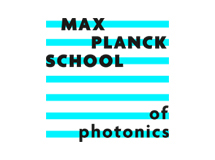Andreas Tünnermann - Green Photonics – optical solutions for the future
Prof Andreas Tünnermann, Fraunhofer Institute for Applied Optics and Precision Engineering, Jena; Friedrich Schiller University, Jena
Abstract:
Humanity faces today multitude of challenges as energy consumption and climate change, healthcare in an ageing society, the knowledge society and public safety and security. The sustainable use of light “Green Photonics” can contribute to solve these pressing future issues.
Essential operation fields are
- alternative methods of energy conversion
- decreasing of energy consumption and efficient use of natural resources
- conservation of climate and environment
- food protection and health care
Green Photonics brings together the various application possibilities of light for protecting the environment and healthy living. These include optical and optoelectronic technologies which save energy, reduce emissions from greenhouse gases, avoid polluting the environment, or contribute to environmentally compatible and sustainable production. The use of resource and environmentally friendly, i.e. “green” optical technologies holds enormous economic potential, ranging from efficient lasers via optical metrology and sensor technology to power-saving lighting and effective CO2-neutral energy conversion.
A great amount of energy could be saved in the area of lighting. Today, around 20 percent of the total demand for electricity around the world is used for lighting purposes. Around 50 percent of this could be saved by using more efficient light sources, corresponding to the total electrical energy requirements of Western Europe and a CO2 equivalent of 600 million tons. In the field of resource-friendly power generation, photovoltaics and solar-thermal energy are increasing in importance. The aim here must be to continue increasing efficiency while simultaneously reducing costs with new concepts and alternative technologies. “Green Photonics” also play an important role in the development of sustainable and energy-efficient production processes, for example in laser welding or the manufacture of vehicle components in the automotive industry. In this regard, ultrashort-pulse fiber lasers which can be used highly efficiently in micro-material processing are particularly promising. The field of information and communication consumes two to three percent of world energy requirements today, and this power consumption is increasing by up to 20 percent a year in the light of rapidly rising data traffic. Here too, considerable energy savings could be achieved with improved optical networks. In climate research, optical sensors in satellite-aided earth observation systems help in detecting pollutants in the air or sea, early recognition of environmental disasters, and the development of countermeasures.
In this contribution, novel developments in the sustainable use of light are reviewed and perspectives of Green Photonics discussed.
About DLS:
The Distinguished Lecturer Series (DLS) follows a colloquium format for a broad audience and will be followed by a reception to provide an opportunity for meeting the speaker.





